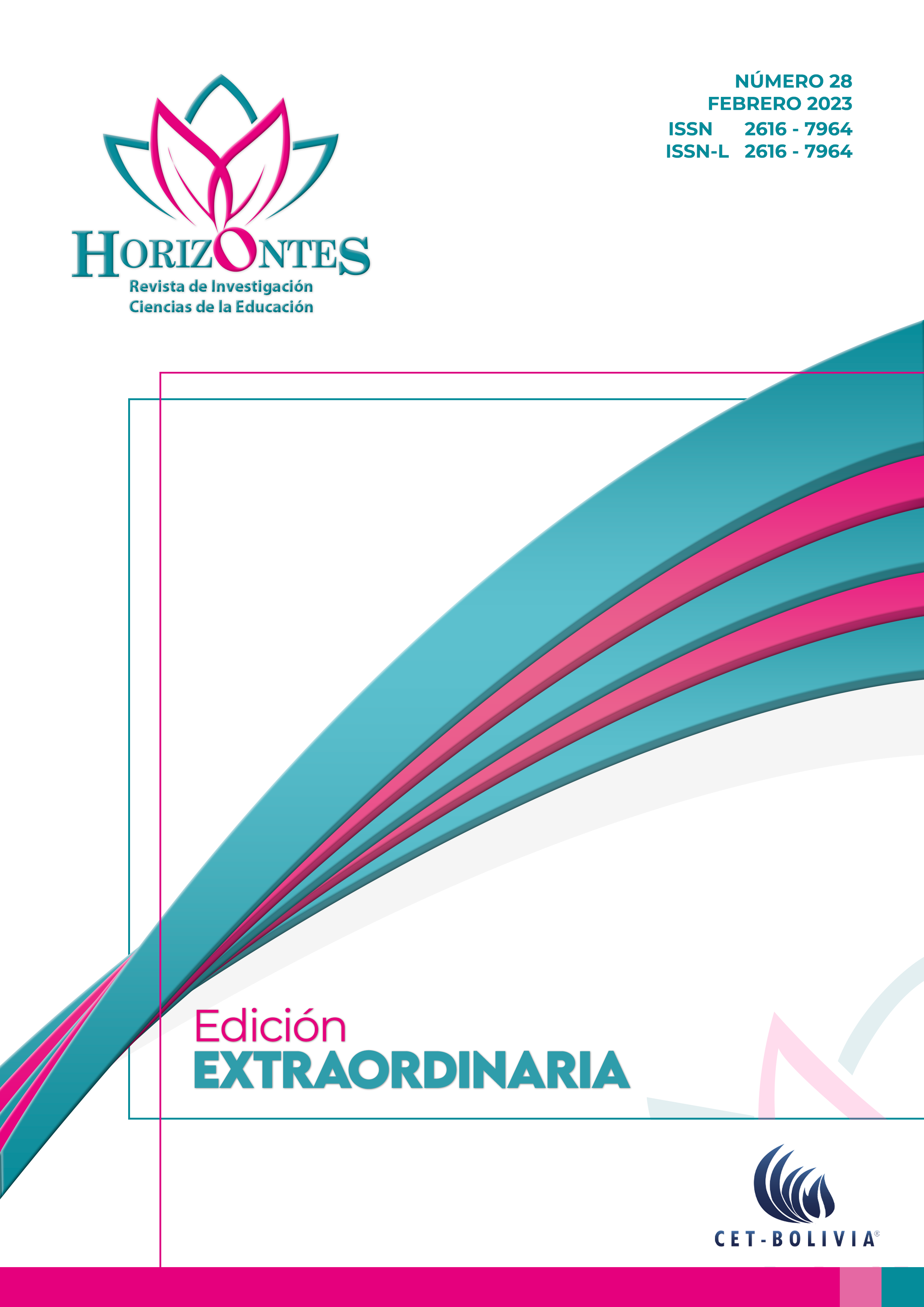Virtual teaching from the educational quality approach
Enseñanza virtual desde el enfoque de la calidad educativaMain Article Content
Educational quality in Latin America has deteriorated during the pandemic; therefore, it is relevant to understand it in this context. The objective was to interpret e-learning from the educational quality approach (EVdFC). The method was qualitative approach with hermeneutic methodology. The method was interpretative where the interview technique was used through a guide of semi-structured questions to educational entities that were giving or receiving the educational service through virtuality. The results were: an emerging category, related to the updating and adaptation of a curriculum that responds to the objectives of sustainable development, that prepares new professionals with adequate competencies for the world of work, improvement in curricular content, use of digital resources, adequate digital infrastructure that guarantees the quality of teaching and construction of learning. In conclusion, it is imperative to diversify a hybrid curriculum.
La calidad educativa en América Latina se ha visto deteriorada durante la pandemia, por tanto, conocerla en este contexto es relevante. El objetivo fue interpretar la enseñanza virtual desde el enfoque de la calidad educativa (EVdFC). El método fue de enfoque cualitativo con metodología hermenéutica. El método fue interpretativo donde se usó la técnica de entrevista a través de una guía de preguntas semiestructuradas a entes educativos que se encontraban dando o recibiendo el servicio educativo a través de la virtualidad. Los resultados fueron: una categoría emergente, relacionada con la actualización y adaptación de un currículo que responda a los objetivos de desarrollo sostenible, que prepare a los nuevos profesionales con competencias adecuadas para el mundo laboral, mejora en los contenidos curriculares, uso de recursos digitales, adecuada infraestructura digital que garantice la calidad de la enseñanza y construcción de aprendizajes. En conclusión, es imperativo diversificar un currículo híbrido.
Downloads
Article Details
Alkureishi, M. A., Lenti, G., Choo, Z. Y., Castaneda, J., Weyer, G., Oyler, J., y Lee, W. W. (2021). Teaching telemedicine: The next frontier for medical educators. JMIR Medical Education, 7(2). https://doi.org/10.2196/29099
Almohammed, O. A., Alotaibi, L. H., y Ibn Malik, S. A. (2021). Student and educator perspectives on virtual institutional introductory pharmacy practice experience (IPPE). BMC Medical Education, 21(1). https://doi.org/10.1186/S12909-021-02698-5
Canchari, C. R. A., y Medina-Quispe, C. I. (2020). COVID-19 y la educación en estudiantes de medicina. Revista Cubana de Investigaciones Biomédicas, 39(2). https://doi.org/10.1056/NEJMp2003539
Edgar, A. K., Macfarlane, S., Kiddell, E. J., Armitage, J. A., y Wood-Bradley, R. J. (2022). The perceived value and impact of virtual simulation-based education on students’ learning: a mixed methods study. BMC Medical Education, 22(1), 823. https://doi.org/10.1186/S12909-022-03912-8
Figallo, F., González, M. T., y Diestra, V. (2020). Perú: Educación superior en el contexto de la pandemia por el COVID-19. Revista de Educación Superior En América Latina. https://rcientificas.uninorte.edu.co/index.php/esal/article/view/13404
Gallego Torres, A. P., Bustos Velazco, E. H., y Reyes Roncancio, J. D. (2020). Guided Models for Teaching Students Research in Science and Engineering. Tecnura, 24(66), 85–94. https://doi.org/10.14483/22487638.16133
García, M. M. (2021). The European Higher Education Area and its quality seal. Revista Espanola de Educación Comparada, 37, 153–173. https://doi.org/10.5944/REEC.37.2021.27728
Gard, J., Polley, C., Cisternino, A., y Gray, A. (2022). The void: COVID-19 restrictions and junior doctor education opportunities. Medical Teacher, 44(11), 1290–1295. https://doi.org/10.1080/0142159X.2022.2093701
Grupo Educación al Futuro. (2021). Situación del sistema universitario peruano | Educación al Futuro. Grupo Educación al Futuro. https://educacionalfuturo.com/noticias/regulando-la-calidad-en-la-cantidad-situacion-del-sistema-universitario-peruano/
Hernández-Herrera, C. A. (2019). Los jóvenes universitarios y su apreciación sobre algunos elementos que miden la calidad en la educación superior. Ciencia UAT, 14(1), 102. https://www.scielo.org.mx/scielo.php?script=sci_arttextypid=S2007-78582019000200102
Huamaní, C., Timaná-Ruiz, R., Pinedo, J., Pérez, J., y Vásquez, L. (2020). Condiciones estimadas para controlar la pandemia de COVID-19 en escenarios de prey poscuarentena en el Perú. Revista Peruana de Medicina Experimental y Salud Pública, 37(2), 195–202. https://doi.org/10.17843/RPMESP.2020.372.5405
Kayingo, G., Gordes, K. L., Kulo, V., y Cawley, J. F. (2022). Accreditation in the Health Professions: Implications for Physician Assistant Education. The Journal of Physician Assistant Education: The Official Journal of the Physician Assistant Education Association, 33(4), 318–324. https://doi.org/10.1097/JPA.0000000000000462
Kruse, C., Gouveia, K., Thornley, P., Yan, J. R., McCarthy, C., Chan, T., Kishta, W., y Khanna, V. (2022). COVID-19 and the transition to virtual teaching sessions in an orthopaedic surgery training program: a survey of resident perspectives. BMC Medical Education, 22(1). https://doi.org/10.1186/S12909-022-03703-1
Lakshmi Priyadarsini, S., y Suresh, M. (2020). Factors influencing the epidemiological characteristics of pandemic COVID 19: A TISM approach. International Journal of Healthcare Management, 13(2), 89–98. https://doi.org/10.1080/20479700.2020.1755804
Maguiña Vargas, C., Gastelo Acosta, R., y Tequen Bernilla, A. (2020). El nuevo Coronavirus y la pandemia del Covid-19. Revista Médica Herediana, 31(2), 125–131. https://doi.org/10.20453/RMH.V31I2.3776
Muñoz, F., Beltrán, J. C., Alves, R., y Rodríguez, F. (2022). Academic Satisfaction of Pedagogy Students Regarding Learning in Virtual Mode. International Journal of Learning, Teaching and Educational Research, 21(9), 35–51. https://doi.org/10.26803/IJLTER.21.9.3
Programa de las Naciones Unidas para el desarrollo. (2021). Objetivos de Desarrollo Sostenible | PNUD. https://www1.undp.org/content/undp/es/home/sustainable-development-goals.html
Rivera, C. (2019). Investigación básica e investigación aplicada. 2019–2021.
Sánchez Alcalde, L. A. (2020). Suficiencia y equidad de la infraestructura escolar en el Perú: un análisis por departamentos y regiones naturales. Revista Educación, 186–207. https://doi.org/10.15517/REVEDU.V44I2.39190
SUNEDU (2020). Resolución del consejo directivo 039-2020. Resolución Del Consejo Directivo, 6–7.
Telles, N. (2021). Los desafíos de la brecha digital: 10 millones de peruanos no usan Internet por cobertura, costos y falta de interés – TeleSemana.com. https://www.telesemana.com/blog/2021/09/06/los-desafios-de-la-brecha-digital-10-millones-de-peruanos-no-usan-internet-por-cobertura-costos-y-falta-de-interes/
Ugarelli, R., y Sægrov, S. (2022). Infrastructure Asset Management: Historic and Future Perspective for Tools, Risk Assessment, and Digitalization for Competence Building. Water (Switzerland), 14(8). https://doi.org/10.3390/W14081236
Verkuyl, M., Lapum, J. L., St-Amant, O., Hughes, M., y Romaniuk, D. (2021). Curricular uptake of virtual gaming simulation in nursing education. Nurse Education in Practice, 50. https://doi.org/10.1016/J.NEPR.2021.102967
Vincenzi, A. de. (2020). Del aula presencial al aula virtual universitaria en contexto de pandemia de COVID-19. Debate Universitario, 8(16), 67–71. http://portalreviscien.uai.edu.ar/ojS/index.php/debate-universitario/article/view/211/164

